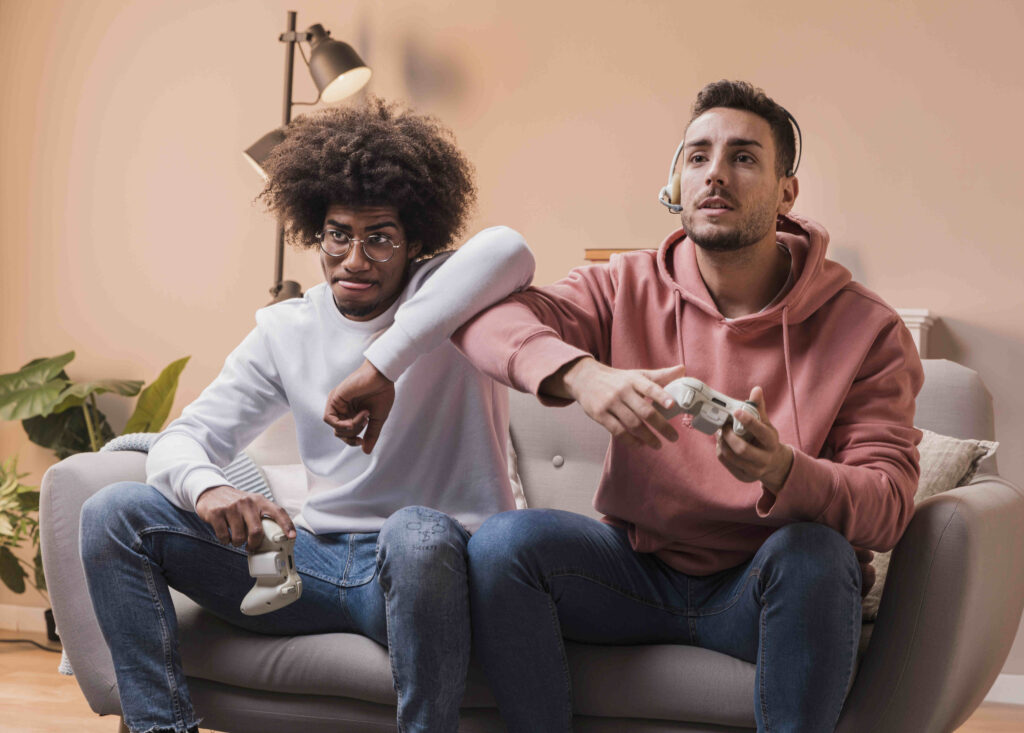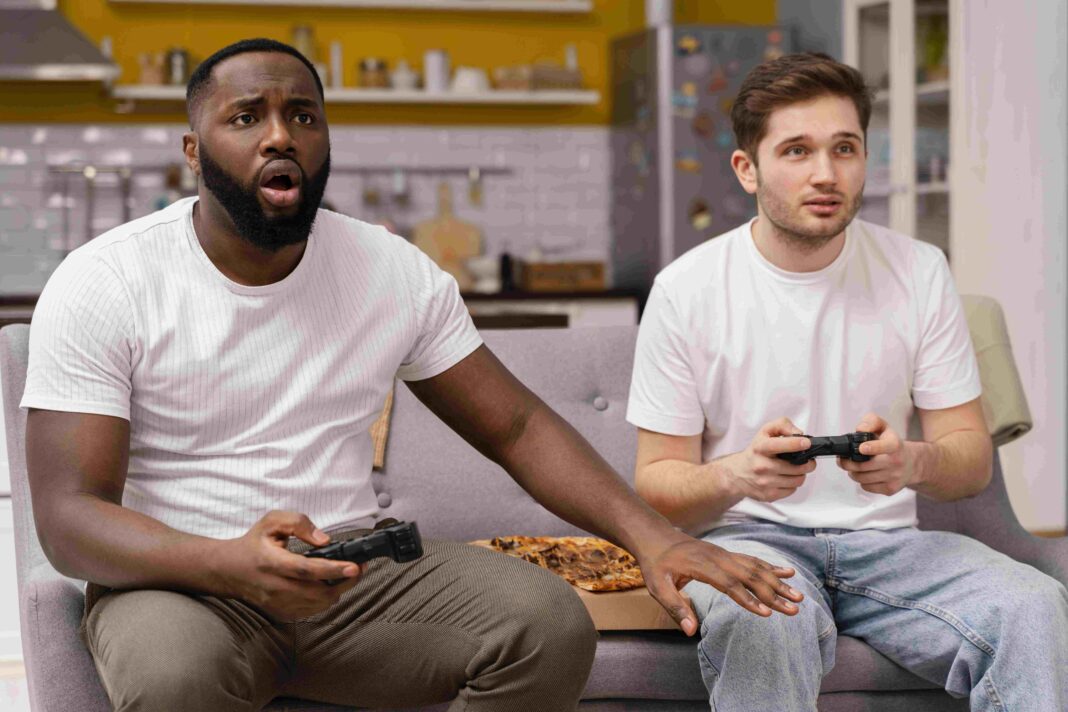Competitive gaming has evolved far beyond simple entertainment—it is now a high-stakes mental sport where cognitive abilities, emotional control, and teamwork determine success. Unlike casual gaming, competitive play demands intense focus, rapid decision-making, and psychological resilience. Players who master these elements rise to the top, while those who neglect the mental aspect struggle despite mechanical skill.

This in-depth exploration examines the psychological forces that drive competitive gaming, from cognitive processing and emotional regulation to team dynamics and performance under pressure. By understanding these factors, players can refine their mental approach, optimize training, and gain a true competitive edge.
1. The Cognitive Foundations of High-Level Gaming
1.1 Information Processing and Reaction Time
Elite gamers process visual and auditory cues at extraordinary speeds. Studies using EEG and eye-tracking technology reveal that professionals:
- Scan screens 30% faster than amateurs, identifying threats and opportunities in milliseconds.
- Filter irrelevant details (e.g., background visuals, unnecessary sounds) to focus only on critical information.
- Anticipate opponent moves based on subtle patterns, a skill honed through thousands of hours of gameplay.
A 2022 study in Nature Human Behaviour found that pro gamers exhibit neural efficiency similar to chess grandmasters, with brains that automate complex decision-making processes.
1.2 Working Memory and Multitasking
Competitive games like StarCraft II and League of Legends require juggling multiple objectives simultaneously. Successful players:
- Track cooldowns, enemy positions, and macro-strategy without cognitive overload.
- Use chunking (grouping information into manageable units) to reduce mental strain.
- Adapt strategies in real-time, shifting from offense to defense seamlessly.
Research from the University of California shows that gamers who train with memory drills (e.g., recalling spawn timers, ability sequences) improve in-game performance by up to 18%.
1.3 Pattern Recognition and Game Sense
“Game sense” separates experts from novices. This subconscious understanding includes:
- Predicting enemy rotations in MOBAs based on missing lane opponents.
- Recognizing attack patterns in fighting games to counter effectively.
- Exploiting map control trends in FPS games.
A Journal of Cognitive Enhancement study found that pattern recognition training (e.g., reviewing replays, studying opponent habits) accelerates skill development more than mechanical practice alone.
2. Emotional Control: The Hidden Skill of Elite Gamers
2.1 Understanding Tilt: Why Players Self-Sabotage
Tilt—a state of frustration leading to poor decisions—is a major performance killer. Common triggers:
- Unlucky game events (e.g., critical hit RNG, lag spikes).
- Teammate mistakes that feel outside one’s control.
- Self-criticism after errors, creating a negative feedback loop.
Neuroscience reveals that tilt activates the amygdala, the brain’s threat-response center, impairing rational decision-making. Players who recover quickly use techniques like:
- Box breathing (inhale 4 sec, hold 4 sec, exhale 4 sec) to reset mental state.
- Reframing thoughts (“This loss is data, not failure”).
- Short breaks (5–10 minutes) to disrupt frustration cycles.
2.2 The Confidence-Competence Loop
Overconfidence leads to reckless plays; self-doubt causes hesitation. Top players balance:
- Realistic self-assessment (knowing strengths/weaknesses).
- Controlled aggression (taking calculated risks).
- Post-game reviews to identify improvement areas.
A Sports Psychology study found that gamers who journal their performances increase win rates by 12% within two months.
2.3 Handling Pressure in Tournaments
LAN events and live streams magnify stress. Techniques used by pros:
- Pre-game routines (specific warmups, music playlists).
- Visualization (mentally rehearsing clutch scenarios).
- Focus cues (e.g., a keyword to recenter during chaos).
3. Team Dynamics: The Psychology of Squad-Based Competition
3.1 Leadership Styles in Esports
Teams thrive under different leadership approaches:
| Style | Example | Best For |
|---|---|---|
| Authoritative | Clear shot-calling (CS:GO IGL) | Structured games |
| Democratic | Group strategy discussions | Creative playstyles |
| Supportive | Encouraging morale | Teams with confidence issues |
Data from Esports Insider shows that teams with adaptive leadership win 27% more close matches.
3.2 Conflict Resolution and Toxicity
Toxic teams lose more. Effective squads:
- Use “we” language (“We need to adjust” vs. “You’re throwing”).
- Implement post-loss debriefs (focus on fixes, not blame).
- Rotate shot-callers to prevent burnout.

